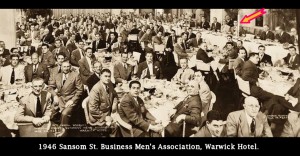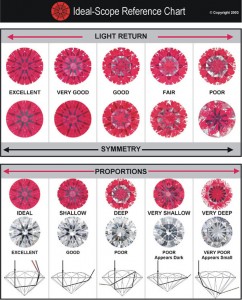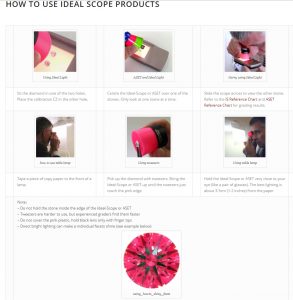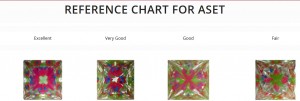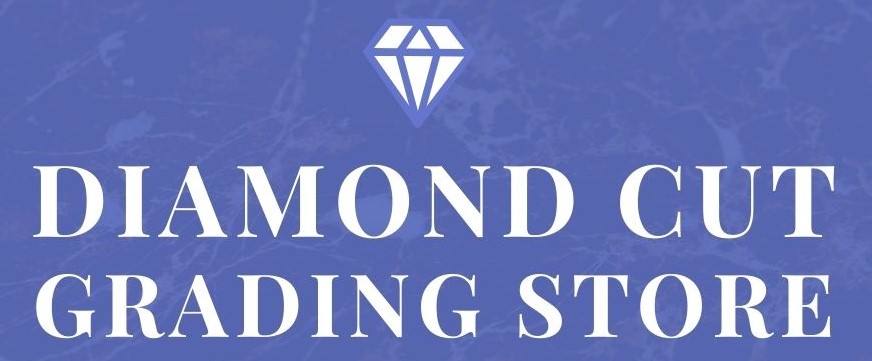Travel destinations often use hype, and high pressure. They may easily abuse naive clientèle and impulsive shoppers. There is often insufficient time to make high quality and informed decisions when buying in these locations.
Professional appraisers generally suggest:
- Only buy where there is a fair and adequate return policy in place.
- Don’t buy when you cannot change your mind with a minimum of at least seven (7) days and get a full refund, not just store credit.
- Such a “cooling off period” is an extremely important element of “a truly good deal”
The following 4 part article was written by David Siskin on his BLOG, JewelleryIntellect.com back in 2014. It describes the situation with jewelry sales in vacation destinations, especially when traveling on cruise ships. It is still very true and important to read today.
The incredible jewelry selling machine – Part 1 by Dave Siskin • October 8, 2014
It swallows consumers by the thousands, storing them in its belly while it traverses the seas in search of places for its captives to spend money as rapidly and efficiently as possible. Teams of well-trained pre-sales cheerleaders prime the consumers for the feeding frenzy while gently steering them to the sellers willing to pay for targeted customer delivery. After processing the customers through several shopping feedlots, they are disgorged back to their original capture point happier, fatter, and over-burdened with new purchases.
Welcome to the world of cruise ships in the Caribbean; floating palatial resorts designed to make the passengers feel wealthy and spoiled. For the last twenty years I worked as a consultant to the Caribbean jewelers serving the multi-billion-dollar cruise ship market. I recently took a cruise and had a chance to see it from the passenger’s point of view. It was an eye-opening experience.
From the moment you book your cruise there are two things that are stressed in their communications more than anything else: We are here to guide and protect, you are here to enjoy and consume. Onboard there is constant entertainment, never-ending food, and free-flowing alcohol to trigger the self-indulgent gene that hides in all of us. Every slightest wish is fulfilled instantly by the helpful and friendly crew. And underneath all the luxurious splendor, the gluttonous consumption of food, fun and frolic is a constant message delivered both blatantly and subliminally: “You must buy jewelry!”
Ads for jewelry stores at each scheduled port grace almost all onboard media. There are port lectures extolling all the wondrous delights that await at each stop including selected fine jewelers. Professional “Shopping Experts” give workshops on how to buy a diamond; briefly touching on the 4C’s while promoting the hand-picked, trusted stores where you will save at least 70% over back home prices. The Shopping Expert will even meet you onshore and hold your hand through the entire purchase process…just to be sure you get the best deal. On-board contests often have a jewelry item as a prize.
Tapping into people’s emotions it triggers their greed and instils a small amount of fear. That fear drives the customers to the trusted businesses where the cruise line guarantees the purchase through a US based service center. Buying at any other store carries the risk that you might get ripped off in a foreign country with no recourse.
There is a fee for a jewelry store to be on the list, along with product donations for prizes, a gift of a nice watch or pendant for the shopping experts to wear, and last but certainly not least…a commission on each sale made to a passenger on that ship. This is for each ship visit. In some ports there may be six or seven ships per day.
And the whole scheme works remarkably well. Customers are primed and pumped. Featured stores and products experience a feeding frenzy of buying that you must see to believe. The cash registers keep ringing. Individual stores may sell more in a day than many hometown jewelers do in a month…or several months.
The incredible jewelry selling machine – Part 2 by Dave Siskin • October 10, 2014
Locking the door behind him, a jewelry store owner starts his day. It is 7 AM and he doesn’t open for several hours but any later and he won’t be able to find a parking spot. There are more stores than parking spaces. But there is always work to do, emails to answer, bills to pay.
Every day he faces an up-hill battle to survive. His store is in a prime location on an island that is one of the busiest cruise ship ports in the region. His rent is staggering, in some cases as much as $20,000 per month for a 400 sq. ft space (37 sqm). If you include all costs: labor, utilities, advertising, security, etc. an average small, independent jeweler may have a few thousand dollars a day in overhead. Let’s say our jeweler needs $1500 a day in gross profit before he can break even.
He carries an inventory of over $10 million dollars but owns very little of it. He relies on memo to fill his cases. The downside of memo is that the bulk of the money from most of his sales goes to his supplier and not to paying his bills.
High season is only about four months long. During that time there may be as many as seven ships per day. A busy day brings over 18,000 new potential customers being dropped off at his doorstep. He has 250 other jewelry stores in competition with him, many carrying the same items from the same suppliers. He marks each piece at ten times his cost, knowing that cruise ship passengers have been told to expect 70% off.
The jeweler is ready to fight for each customer. He will always try to get as much as he can but is ready to go as low as needed to make the sale. On most items he manages at least 30% over cost but high-ticket items often sell at single digit mark-ups.
The rest of the year the store will barely cover its overhead. At the lowest season, also about four months long, there may be only one or two cruise ship visits per week and a few weeks without any ships at all. To cover the slow times our jeweler now must profit $6000 a day in high season just to stay afloat for the year meaning our valiant jeweler must make at least $20,000 in sales to stay alive.
It becomes a game of chasing cashflow over profit; always paying yesterday’s bills with tomorrow’s sales. One jeweler told me:
“Cashflow is like a flowing river. All you can do is dip your hand in the water and hope to drip a few drops into your cup.”
For more than 30 years, this life-giving river of customers was enough to provide a good living for the retailers and their staff. Many of them became quite wealthy. Today margins are shrinking, the demographics are changing, and competition for each dollar is fierce. It can still be a rewarding business, but it takes harder work than before.
But the ships keep coming and the shoppers keep shopping. That isn’t about to end anytime soon. It is still the hottest jewelry market in this part of the world.
The incredible jewelry selling machine – Part 3 by Dave Siskin • October 21, 2014
Your first introduction to the cruise directors and destination hosts begins with the required lifeboat drill. At your assigned muster station, one of the host staff will be on stage directing the drill. The message is clear: Follow us, do as we say, go where you are told, and we will always keep you safe. It is our job. We take our job seriously because we care about you. Trust us; we know what we are doing.
Cruise directors and hosts seem to be everywhere; introducing port lecturers, speaking of their own experiences while shopping at the destination, showing off their own jewels found in the next port, hosting the evening’s entertainment. They lead you in silly games to get you out of your comfort zone, breaking down your usual pattern of cautious behavior. You’re here to have fun and let loose. Try something new. We will protect you. You don’t worry.
The host will become your best friend, confidante, and advisor. They know everything…even where to get the best deal on jewelry. While you wait to exit disembark at the port they keep you entertained and get you excited about all the magnificent jewels and the “lowest on the planet” prices. You are on holiday. It’s time to splurge. You are safe if you follow our suggestions.
You hit the port armed with a map of recommended stores, a little bit of knowledge and a boat-load of confidence. You’ll have a handful of coupons for free gemstones, free pendants, free water, gifts and other incentives at different stores. Now the store takes over.
The salesman has about 15 seconds to get your attention and start a dialogue. His first step is to up-sell the coupon to turn the free gift into a sale. A free gemstone can be upgraded to one set in a pendant for $29.95 or a bigger and nicer piece for $59.95. Whatever the free gift, it can turn into a sale. They have a five minute window to close the sale or move on to the next level…the good stuff.
These guys are experts, practicing their craft on dozens of customers per day. They ask what ship you are on. They will remind you that their store is approved and guaranteed by your ship, so they must be one of the good guys. They even know your cruise director/best friend personally! They can obviously be trusted. And somehow or another that free gem becomes 5ct bracelet, a 2ct pair of studs or even a 5ct center stone in a new ring. Maybe you’ll take them all. Get something nice for yourself. You deserve it!
Back on the ship you can’t wait to show your new best friends what you bought and thank them for all their help and guidance. The next step is to register your purchase with the ship. This activates your guarantee. More importantly…it gives the ship a way to account for their expected commissions and verify that the store is reporting all the sales.
If you forgot to buy something…no worries. Once the ship is on the way home and no longer in competition with the advertisers, the overpriced jewelry store on the ship will have a huge sale.
The incredible jewelry selling machine – Part 4 by Dave Siskin • October 29, 2014
The US cruise industry generates over $30 billion a year in revenue. Each ship visit can add around $1 million to the local economy. There are close to 200 cruise ships that bring over 14 million passengers to a handful of small island nations in the Caribbean Basin and The Bahamas. Some of the islands are quite small. The island of St Martin is 87 square kilometers and divided between two countries; France and the Kingdom of the Netherlands. For many of the islands In the Caribbean, cruise tourism is the only source of income.
All the shipboard marketing. including the port talks. are owned and run by independent contractors who hire and train the shopping experts and port lecturers. They also provide training to cruise directors and other crew members who work directly with passengers. They collect the commissions and fees, splitting the profits with the cruise line.
Not all stores participate in cruise promotions but the ones that do will see more traffic and more sales but at a much higher cost. Other stores believe their own marketing and reputation will draw customers and don’t feel the need to partner with the promoters. Still others are quite happy with the overflow from everyone else’s marketing efforts.
The Caribbean jewelry industry is a confusing and misunderstood market. The Caribbean has been associated with gold, gems and jewelry since the days of the pirates. Eventually the pirates became legitimate merchants and shippers, creating Duty-Free ports to encourage trading.
Many US jewelers tend to dismiss the Caribbean jewelers as nothing more than latter day pirates. While there are some stores that may have less than ideal ethics and business practices, the majority of the stores are sincere, honest, family run businesses. Some of the larger chains are very well run and professional.
This is not a small market of tourist trinkets. There are some serious sales being made. A small family run store will need to have over $1 million in sales to survive. Annual revenues in the $5-10 million range are typical. Six-figure days can happen at any time. For the more exclusive stores, seven figure single items will sell more often than you might think.
These floating jewelry selling machines have been operating for several decades, perfecting their systems and driving jewelry sales. It worked beautifully and built a massive retail jewelry industry. But the market is changing and neither the promoters nor retailers have caught on. There is an understandable reluctance to change something that has worked for generations. The machine will keep churning out the shoppers; it’s up to the stores to figure out how to continue catching them.
Cruising is becoming popular in Asia, but the emphasis is still more on touring rather than jewelry consumption. I am sure they have strong local product promotions appropriate to each country but the intense promotion of jewelry that we see in the Caribbean has not hit the Asian ports. yet. But it will.
